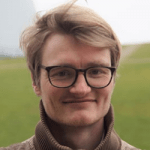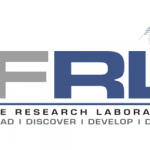Critical Success Factors for Quantum Traffic Optimization Projects

(IQT-Blog) A review of traffic optimization efforts since 2017 reveals common factors leading to successful outcomes. Australia’s NSW state transport department just announced the southern hemisphere’s first optimization project. However, the project has not yet included some of the key skills needed.
The northern hemisphere has monopolized projects exploiting quantum computing to optimize traffic management and navigation. All that is about to change. Australia’s New South Wales state government recently announced the southern hemisphere is getting their first traffic project. The government-led partnership will attempt to solve traffic issues for a city where movement is complicated by a large harbor and rivers dividing north/south flow. It is not clear whether the government has gathered all the necessary partners to the task.
Examining projects that tackled tracking traffic optimization since 2017 reveals several critical success factors for Quantum Computing efforts:
plentiful data on supply availability
plentiful data on demand location and timing
data engineering skills to clean and validate source data
analytics and data science skills for analyzing data
modeling skills for path optimization
quantum developer skills and algorithm expertise for building the quantum application
classical developer skills to interface to user-facing applications
Volkswagen Led the Way in Traffic Optimization Projects
In “Quantum Computing Strategies: 2019”, Lawrence Gasman & Peter Morgan wrote about the Volkswagen Group (VW) as one of the first automakers to work intensively with quantum computing technology.
Their early leap into Quantum Computing was justified by Volkswagen’s CIO Martin Hofmann during a CEBIT talk as “… the learning curve in this field is very long. And then there’s simply the risk that you’re stuck behind the wave when it rises. Know-how in this field has to be built now and employees ought to get into this subject area now so that the group does not lag behind later. We feel sure that the know-how we build today will give us a competitive edge.”
In 2017, Volkswagen led a test project in Asia, using raw data from Beijing’s plentiful connected taxis. Partnering with the taxi service delivered significant quantities of data on traffic flow and transport supply – taxis. Using a hybrid system combining classical and quantum computers, the project predicted the demand for taxis up to an hour in advance of need. Drivers could plan to arrive at locations within the city where demand (passengers) would otherwise be underserved.
By 2019, Volkswagen was leading projects in Europe and felt ready to run a pilot managing bus traffic carrying thousands of passengers for the Web-Summit technology conference in Lisbon, Portugal. The pilot’s partnership with CARRIS public bus services provided a ready source of specific data on supply, demand, and trip time supporting navigation optimization for the conference buses.
These early efforts are already being used by others in the Quantum Computing industry. During the Web-Summit conference, Volkswagen’s earlier research acted as the basis for Masayuki Ohzeki’s efforts. Ohzeki, from Tohoku University, created an algorithm calculating the ideal escape routes in the event of a tsunami – needing a quantum computer to run in real time. Ohzeki’s algorithm sources smartphone GPS data from millions of people affected to determine that individual’s exact position and calculate how he or she can reach the nearest safe place. No simple task when you take into account the acute traffic situation and the possible movements of people fleeing. Bountiful, clean data is critical for success.
Fulfilling Needs Through Partnerships
Of interest across these projects are the partnerships Volkswagen used. Quantum annealing is especially well-suited for these projects as it can natively solve optimization problems. No surprise to see D-Wave as a constant platform and partner for Volkswagen’s projects. (Note: these partnerships are not exclusive with D-Wave also working with other auto companies including Toyota, Ford, and Denso.) The Volkswagen applications for Lisbon were developed jointly with the software specialists Hexad. The analytics-focused PTV Group provided the movement flow analysis within its city model. For the Barcelona project, Volkswagen added data science specialists Teralytics and telecommunications service provider Orange to deliver quantities of data on people locations and movement.
Southern Hemisphere’s First Announced Project
In the southern hemisphere’s first project, the NSW government transport department’s partnership with Q-CTRL calls for a proof of concept. The department can supply plentiful raw data on transport supply across buses, ferries and trains, and Q-CTRL bring a mature choice of python-based quantum development stacks and experience to the mix.
However, based on an analysis of similar projects to date, some critical skills appear missing from the announced partnership. While the department delivers real-time supply data, optimization requires knowledge of potential demand to answer questions like: where are the passengers gathering; where will they gather; and when will demand exceed supply. The addition of a mobile phone telco such as Optus or Telstra could supply real-time passenger demand data to the partnership. Similarly, detailed traffic flow-analysis and city modeling requires specific data science and engineering expertise to convert algorithm outputs into useful instructions for drivers and captains.
The Impact of Unclean Data
Unclean data can have a significant negative impact on quantum applications. For example, an Inside Quantum Technology client who focuses on stock futures runs a data validation step before their model iterations predicting imminent winners and losers. They shared how a period of inaccuracies in related equity data extended the data validation stage into a six-hour process. Unclean data can not only delay results, but the longer run times increase compute costs as well.
As Jeffrey Cohen, the President of Chicago Quantum, noted “Understanding the data that’s available, how clean it is, and how you might gather and use it – that’s almost always the long pole in the tent.”
For more in-depth discussions on quantum computing and other quantum technologies be sure to participate in our virtual conference scheduled for May 17-20, 2021.
Marco Coulter
@marcocoulter
Vice President, Research
Inside Quantum Technology



















